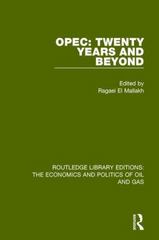2. There are two types of residents in Long Island City (LIC), those who own a pet and those who do not. Long Island City is proposing to add a new public park in town. The benefit (inverse demand) of a new park to pet owners is given by P = 10 -Q where Q is number of square miles of the new park. The benefit to non-pet owners is P = 10-2Q. Assume that there are 1,000 of each type of resident. (a) What is the total benefit to LIC residents for a new park that is 2 square miles? (b) If the cost of adding a new park in terms of square miles is C(Q) = 10000" + 2000, what size of park would maximize social surplus? (e) If LIC funded the park by donations from their residents, would you expect the size of the park financed by the donations to be smaller or larger than optimal park size found in part (b)? Explain.my is described... SmartSite@UCDavis : EC... https:/smartsite.ucdavis... Suppose that velocity of money is constant, the growth rate of money is 5 percent per year (9M = 0.05), and the long-run real interest rate is 2 percent (r = 0.02). Using the Solow-Romer model for output growth, the quantity theory of money for inflation (the growth rate of prices), and the Fisher effect for the relationship between nominal and real interest rates, answer each of the following questions below: A. (1 point) What is the growth rate of real GDP in this economy along the balanced growth path in the baseline case described above? B. (1 point) What is the rate of inflation in the baseline case described above? C. (1 point) What is the nominal interest rate in the baseline case described above? D. (3 points) Suppose the growth rate of money rises to 10 percent per year, what specifically happens to inflation and nominal interest rates? Does the classical dichotomy hold in this case? Briefly explain Inflation (4 points) There are two quotes in Chapter 8:3. Consider an open economy characterized by the following equations C = co + cl 1: (Y T) I'M = le X = x1!" where m1 and x1 are propensities to import and export. Assume that the real exchange rate is xed at a value of 1 and treat foreign income Y* as xed. Note that in this example imports and exports do not depend on the real exchange rate like we saw in class. This is because in the case we are assuming it is equal to 1. Also assume that investment (I) and taxes (T) are xed and that government purchases (G) are exogenous (i.e., decided by the government). We explore the effectiveness of changes in G under alternative assumptions about the propensity to import. a) What should the sign of m1 and 11 be to be consistent with the behavior of the import IZM(Y) and export X(Y*) functions we saw in class? b) Using the fact that Y=C+I+G+NX solve for Y. c) Suppose government purchases increase by one unit. What is the effect on output? d) How do net exports change when government purchases increase by one unit? Now consider two economies, one with m1 = 0.5 and the other one with m1 = 0.1. Both economies have c1 = 0.6. e) Calculate your answers to parts (0) and (d) for each economy by substituting the appropriate parameter values. 1) In which economy will scal policy have a larger effect on output? In which economy will scal policy have a larger effect on net exports? The LA. City Council is deciding whether or not to construct a new quarterblock park. Construction costs are estimated to be $1.25 million, though they may range between $1 million and $1.5 million. Analysis of demand for com parable parks suggests that the park will be utilized for l user-visits, though the estimate hinges on how much new development occurs in the area. Therefore, the actual number of user visits may range anywhere from ll] to 2l],l]. A travelcost analysis of comparable parks suggests that users are willing to pay Ell] per uservisit. However, the analysis was based on a small sample of data and includes a lot of statistical error, so the actual willingness to pay may be anywhere between $3 and $12 per uservisit. For simplicity, we will assume that there are no other relevant costs or benets and ignore the time pattern of costs and benefits, so the net value of the park is simply the users' total willingness to pay [number of user-visits multiplied by the willingness to pay per user-visit] minus the cost of building the park. a. What is your baseline estimate of the net value of the park? b. What is your best case estimate of the net value of the park? c. What is your worst case estimate of the net value of the park? Suppose that each of the three estimates used in your analysis has a uniform distribution. For instance, the realized cost of the park may fall anywhere between $1 million and $1.5 million, and each dollar amount in that range is equally likely. The three random variables are also independent of one another. Your objective is to estimate the distribution of the possible net values of the park using Monte Carlo analysis. {I strongly encourage you to think about how you want to structure your Excel le and create a template before you start doing any calculations] Your Monte Carlo analysis should use l simulations. Based on these simulations: d. What is the average net value of the park across the simulations? e. What is the median net value of the park across the simulations










